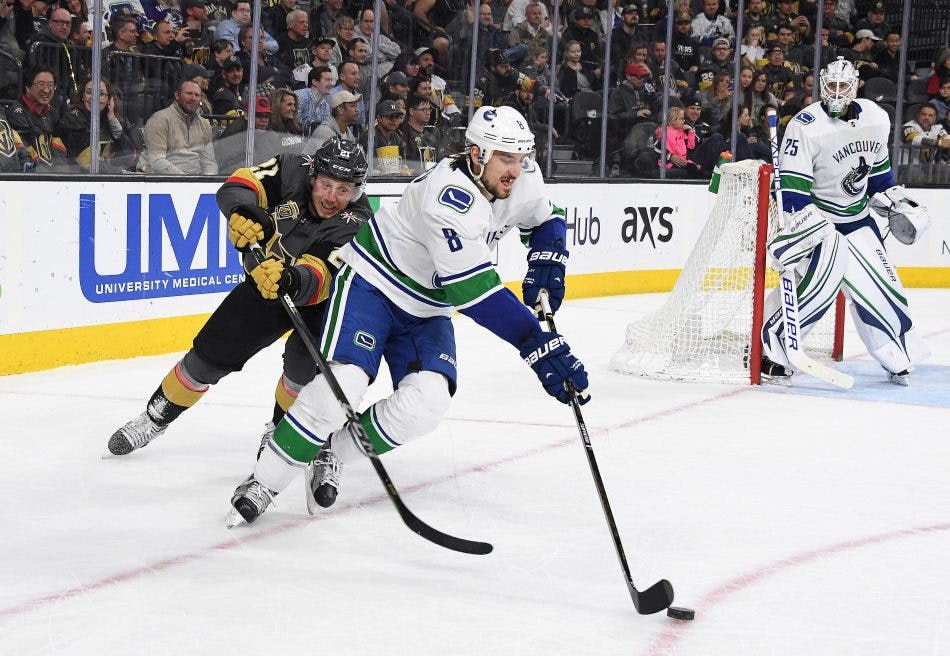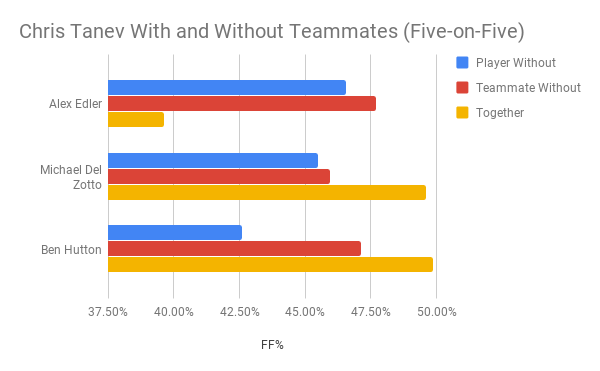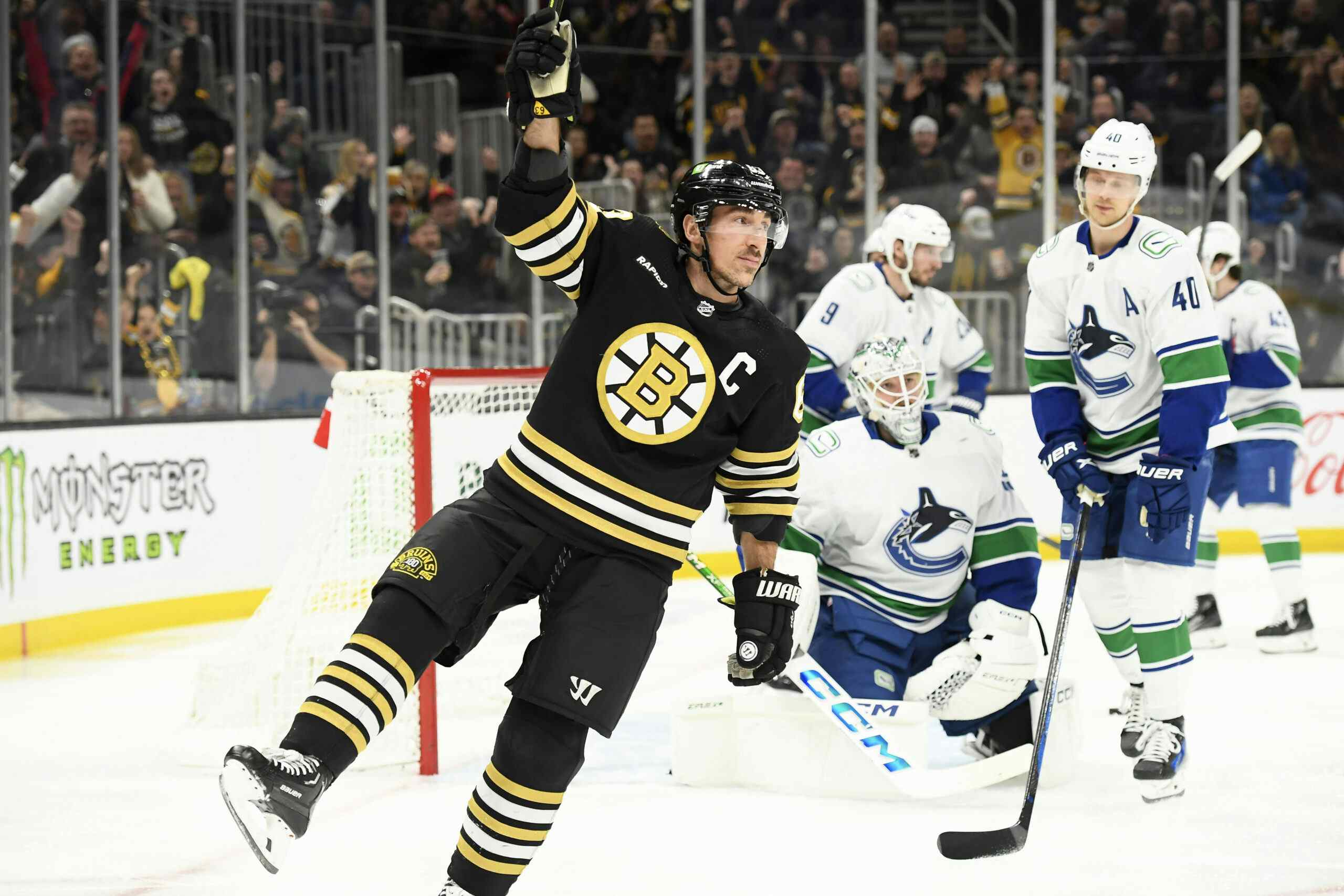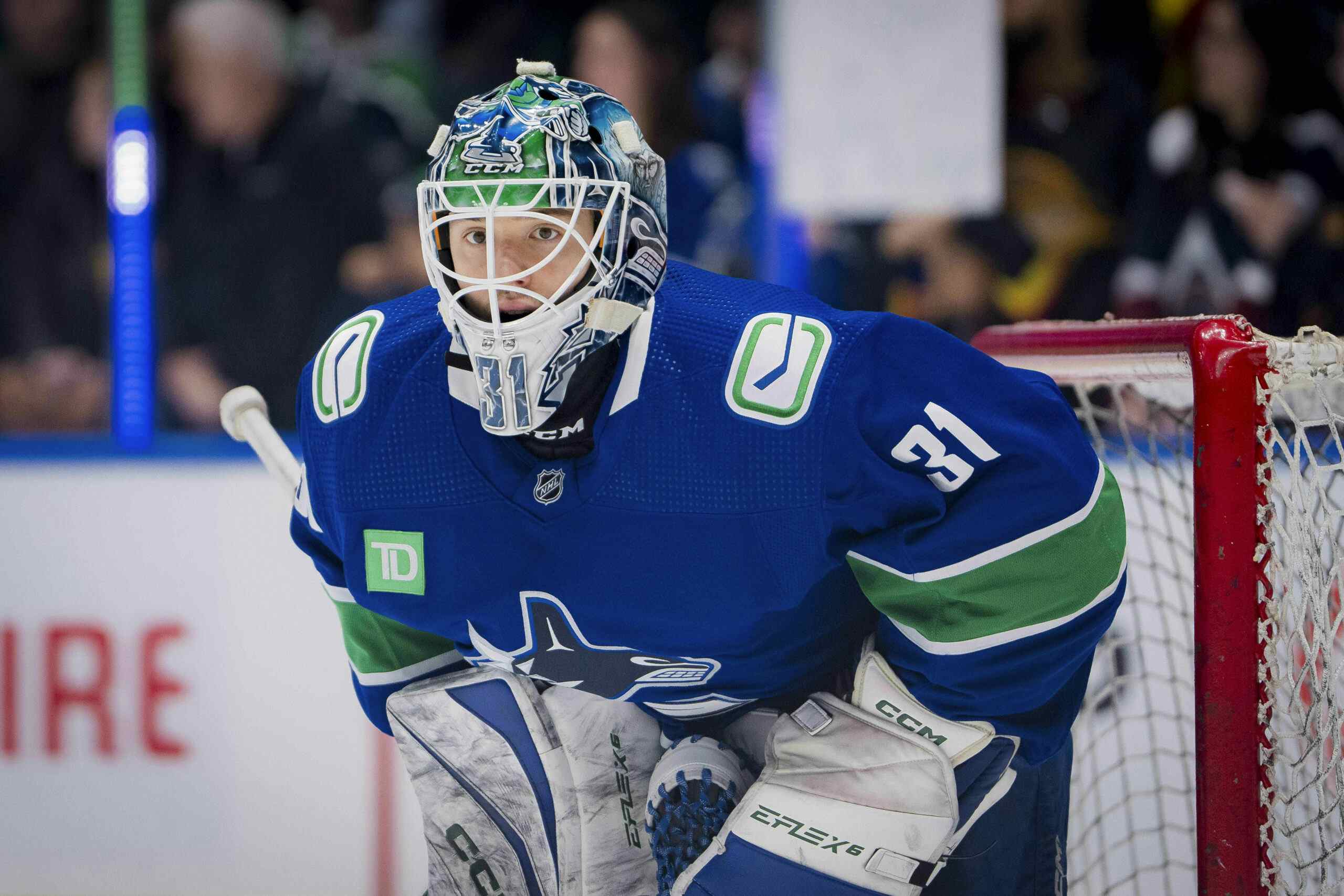Canucks Army Year In Review: Chris Tanev

5 years ago
Since establishing himself as an NHL regular in 2013-14, Chris Tanev has become the new industry standard for defensive defensemen. As the NHL has gotten younger, faster, and more skilled; big, lumbering, physical defensemen have gone the way of the dinosaur. Some would argue the best defense is a good offence, but there’s still a place in the game for players who don’t necessarily offer much in the offensive zone, but can effectively break up passes or zone entries and get the play moving in the other direction. For the past few, Tanev’s made a name for himself doing just that.
Unfortunately, things fell a bit off the rails during the 2017-18 season. He played just 42 games, during which he failed to produce the underlying results that had made him a defensive stalwart in years prior.
| Player | GP | G | A | P | CF% | FF% |
| Chris Tanev | 42 | 2 | 9 | 11 | 47.6% | 46.7% |
When looking at basic underlying shot metrics, Tanev actually saw minor improvements in both on-ice shot differential (Corsi) and unblocked shot differential (Fenwick), but were still poor enough to be the second-worst performance by each metric of his career. Perhaps more startlingly, the once-heralded Edler-Tanev pairing went completely off the rails, posting an on-ice shot-differential of 39.6%.

This was actually something of a trend for Tanev last season – all three of his regular D partners performed better way from Tanev than Tanev did away from them. While Tanev has traditionally always been a drag on his teams shot-generation, he’s generally made up for it by suppressing enough of the opponent’s shots to make up for the difference. That wasn’t the case in 2017-18, as Tanev posted the worst unblocked shots against rate of his entire career. One possibility for this is that Tanev went from playing under Willie Desjardins to Travis Green. Desjardins infamously relied on rolling four lines regardless of which zone shifts were starting in, and hated line-matching. Travis Green has been his opposite in almost every way, using some of the most extreme zone deployment techniques in the league (at least as far as we can measure).
What’s really concerning however is the differences in year-to-year microstatistics, the little plays that go on to make up or influence underlying shot metrics. Harman Dayal made the point quite eloquently in a recent piece for the Daily Hive:
It appears as if injuries are starting to take a toll on Chris Tanev.After dominating with his neutral zone defence and puck moving abilities in 2016-17, Chris Tanev took a definitive step back last season.Particularly surprising was the deterioration of his typically excellent entry defence. In this regard, I’d imagine injuries – he missed 40 games last season – hurt Tanev’s mobility for closing gaps.On the flipside, one area of tangible improvement was the rate at which Tanev led offensive zone entries.This makes sense as it was apparent from day one that new head coach Travis Green wanted defenders like Tanev to play a more active role in transition offence.
The data Harman is referencing comes from Corey Snazjder’s tracking project, conveniently visualized by CJ Turturo in this player comparison tool. The data is reflected in percentiles: the higher the number, the more elite company the player in question is keeping.
As you can see, Tanev’s zone entry rate improved significantly under Travis Green, but the rest of his game deteriorated. Uncharacteristically, Tanev finished below league average in shot contributions, controlled zone exits, and entry defense. The difference from year-to-year is stark, to say the least. In just a single season, his rate of controlled entries allowed plummeted from the 94th percentile to the 8th.
The other obvious explanation for Tanev’s poor play is the injury bug. He played just 42 games in 2017-18, making it the third consecutive season in which he’s made fewer appearances than the last. That’s a concerning trend, to say the least.
The Canucks find themselves at a crossroads with Tanev. From a trade perspective, he’s arguably their most valuable moveable asset. He’s also nearing the end of his contract and it’s unclear if he’ll re-sign. What puts the Canucks in a tough spot is that his value is much lower after his poor performance and injury-plagued season than it’s been in quite some time. The team has a choice to make: they could move him sooner rather than later at a significant discount, or gamble on an improved performance and a boost in trade value next season. The latter would come with significant risk. Tanev’s not getting any younger, and there’s a mounting pile of evidence that his play may already be declining.
Of course, this all relies on the assumption that the team is interested in moving him at all. Recent events suggest the team may be dead set on competing for a playoff spot as soon as next season. It’s early yet, but the Canucks need to be prepared to explore all options. Tanev will be a free agent in 2020, and if the Canucks don’t trade him, they may risk losing him for nothing. Especially if he wants to win now.
It’s not as if the Canucks have been doing much of that recently.






